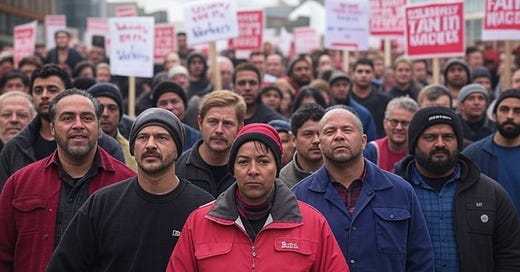Risk & Progress| A hub for essays that explore risk, human progress, and your potential. My mission is to educate, inspire, and invest in concepts that promote a better future. Subscriptions are free, paid subscribers gain access to the full archive, including the Pathways of Progress and Realize essay series.
In the early 20th century, a new vehicle of people power emerged: the labor union. In the First Industrial Revolution, despite huge leaps in productive output, wages barely moved, and work hours increased. It seemed that, absent some kind of intervention, the fruits of industrial progress would remain hoarded by an elite few, much as it had been in agricultural societies. The tide began to turn around 1850 with the “Second” Industrial Revolution. Unions took credit, but labor unions remain controversial; there is good reason to think they may cause more harm than benefit.
A lot could be said of unions. Ostensibly, they are established to balance an asymmetric power distribution between a business’s leadership and its employees. As such, many view unions as figurative heroes of the “working class.” Paradoxically, however, unions do not necessarily help the people most in “need” in a society. On the contrary, they often harm them by raising the price of labor and imposing higher prices on consumers who are usually no better off. Some take an even dimmer view that unions are wealth-destroying “cartels.” I refer to
’s piece on the West Coast Port debate, where he discusses how the International Longshore and Warehouse Union (ILWU) harmfully extracts benefits for its members:



